3 minutes to find out why airplanes fly and why the bottoms of plastic bottles are dented.
Unexpected “Common Sense of Form” – Learn the Secrets Behind the Shapes of Objects
The shape of an object contains the thoughts and wishes of its creator. For example, the shape of a PET bottle. The shape of a plastic bottle, for example, contains the secret of its structure for the safety of customers. For example, the shape of airplane wings and interiors. There are also secrets hidden in the wings and interiors of airplanes to ensure that passengers can enjoy safe air travel.
By thinking about such things, we can teach our children, who will be the leaders of the next generation, about the world, and we can also have a positive impact on our own business and life, don’t you think?
The children’s book “Mono no Katachi Zukan” (The Shape of Things: An Illustrated Book ), now on sale, describes the reasons for the shapes of familiar objects in an easy-to-understand manner. Among them, there are many things that even adults do not understand and think, “Wow! There are many things in the book that even adults don’t understand.
Why don’t you try to learn the reasons for the shapes of things that you are at a loss to answer when asked by your children?
I wonder if you are flying on airplanes without knowing why airplanes fly.
We use airplanes frequently for business trips and vacations, but if you are asked why airplanes can fly in the first place, you may have some trouble.
Airplanes can fly because of their engines, but that alone is not enough. The shape of an airplane’s wings is the secret to its ability to fly high in the sky.
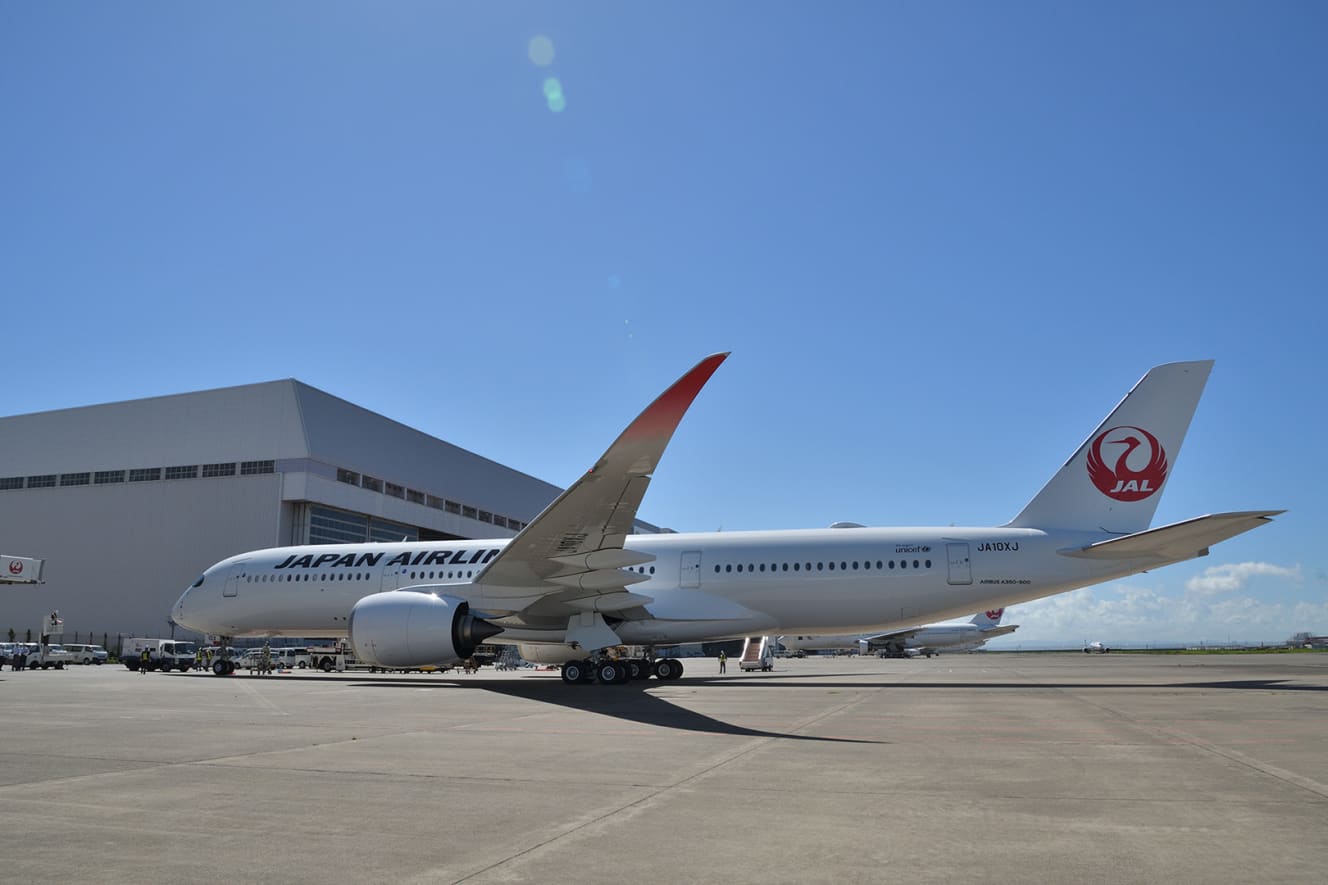
As it turns out, the difference in air pressure between the upper and lower surfaces of an airplane’s wings causes a force to act from the higher-pressure lower surface toward the lower-pressure upper surface, and this upward force lifts the wings, allowing the airplane to fly.
This force acting on the wings is called “lift. You can see that the air pressure that lifts an airplane weighing hundreds of tons is tremendous.

The reason for the pressure difference between the top and bottom of the wing
During flight, air flows at high velocity over the upper and lower surfaces of the wing, although it is invisible to the eye. Wind tunnel experiments have shown that this air flow is faster on the upper surface and slower on the lower surface.
The air above a fast-flowing wing becomes thinner, while the air below a slow-flowing wing becomes denser.
As a result, the air pressure on the upper surface of the wing is lower than on the lower surface, and this difference in pressure generates a lift force from the bottom to the top.
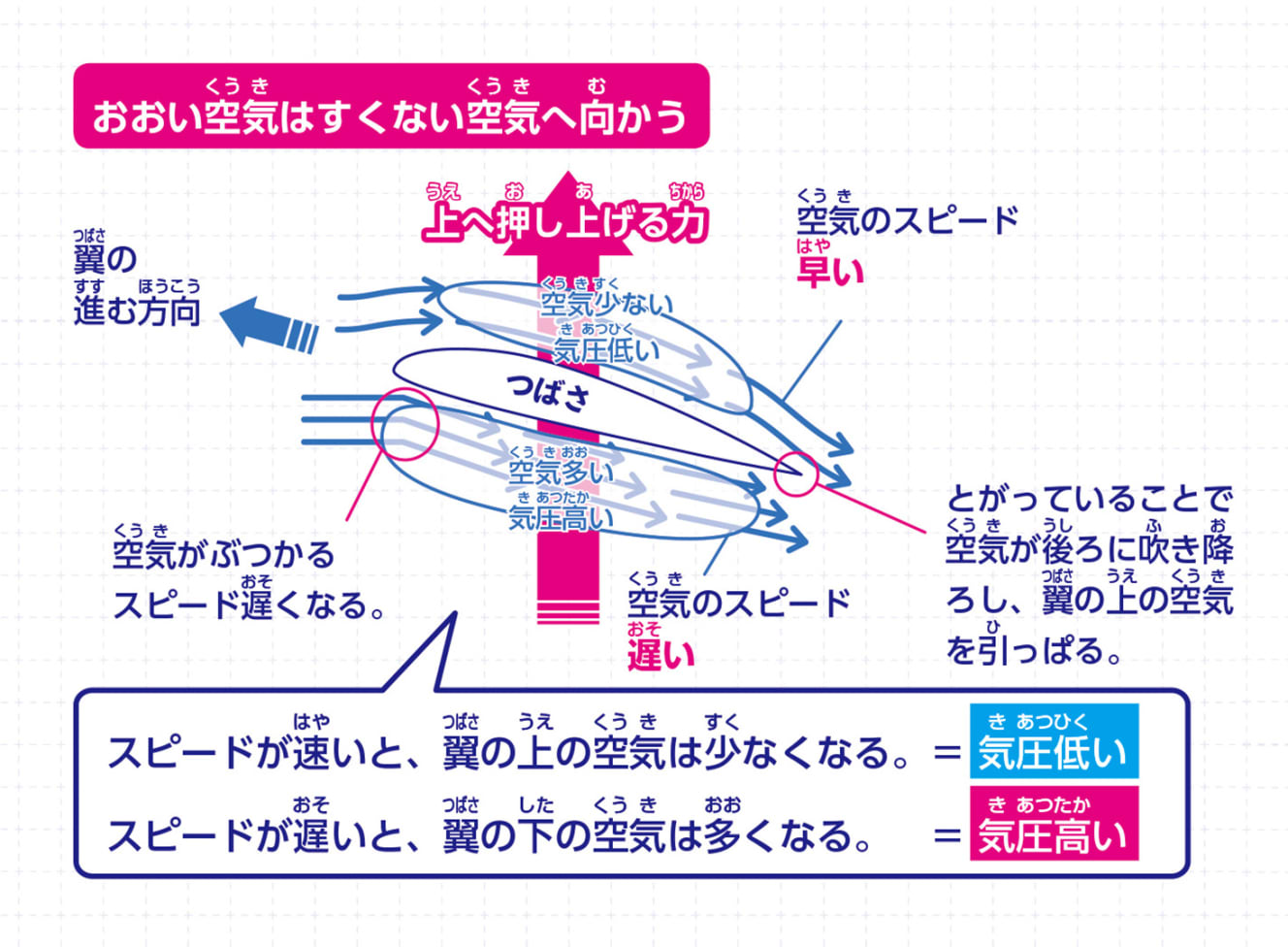
When an airplane takes off into the sky, it travels at high speed on the runway. At this time, the wings are also moving through the wind at a furious pace.
The plane then lifts its nose and takes off into the sky.
Speed is necessary to generate lift on the wings, but angles also increase lift.
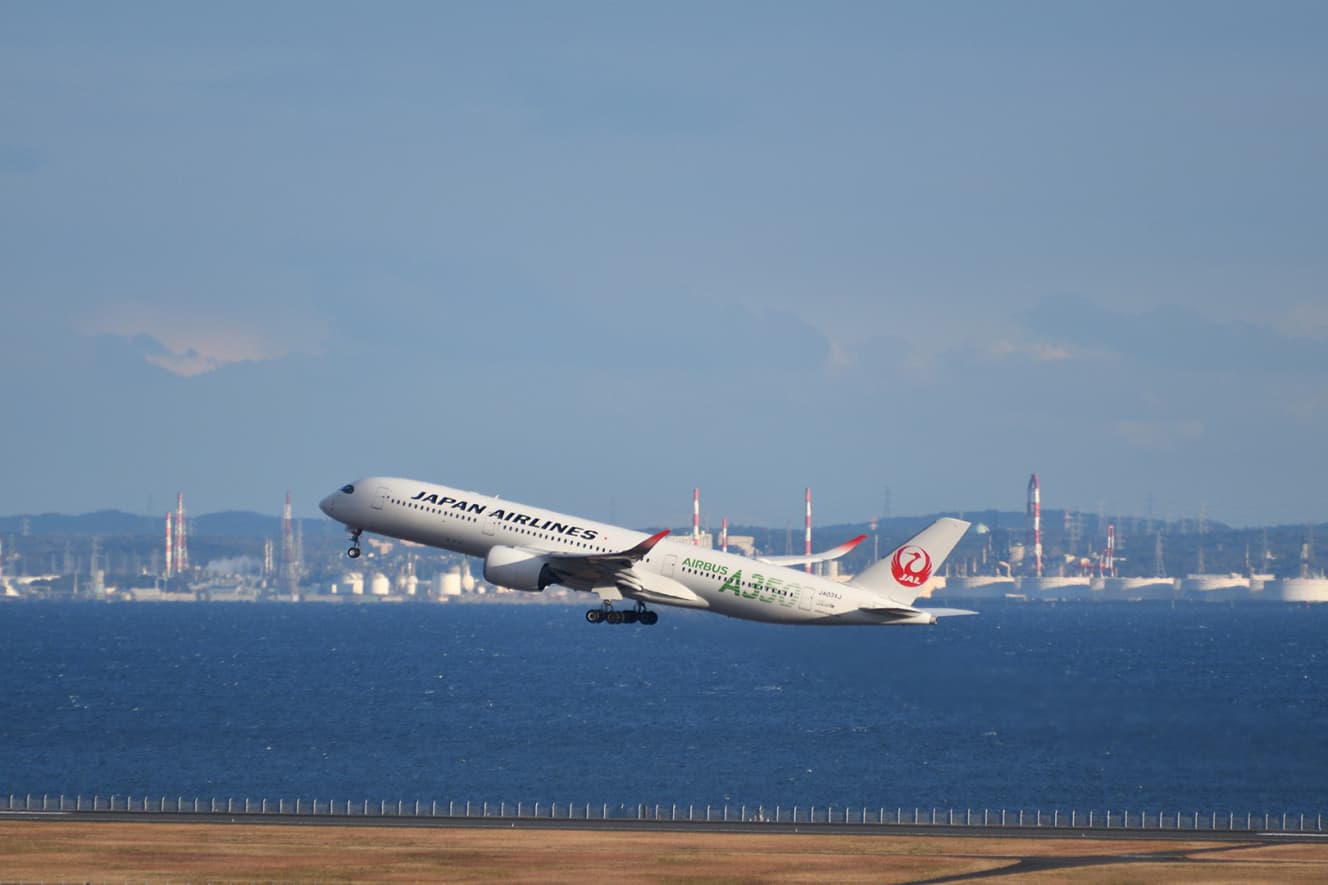
When an airplane turns its nose up at an angle, its horizontally attached wings also turn up at an angle. Like flying a kite, angling the wings increases the difference in air pressure between the top and bottom surfaces of the wings, which in turn increases lift. This angle is called the mukaekaku (angle of attack).
Airplane Tables at an Angle
The angle of attack of the wings is used not only during takeoff, but also in the air.
When an airplane transitions to horizontal flight, if the wings are also horizontal, it must continue to generate speed without reducing engine power in order to keep up with gravity. This consumes a lot of fuel.
Therefore, even when flying horizontally, airplanes fly at a slight angle to conserve fuel by utilizing the lift generated by the angle of attack.
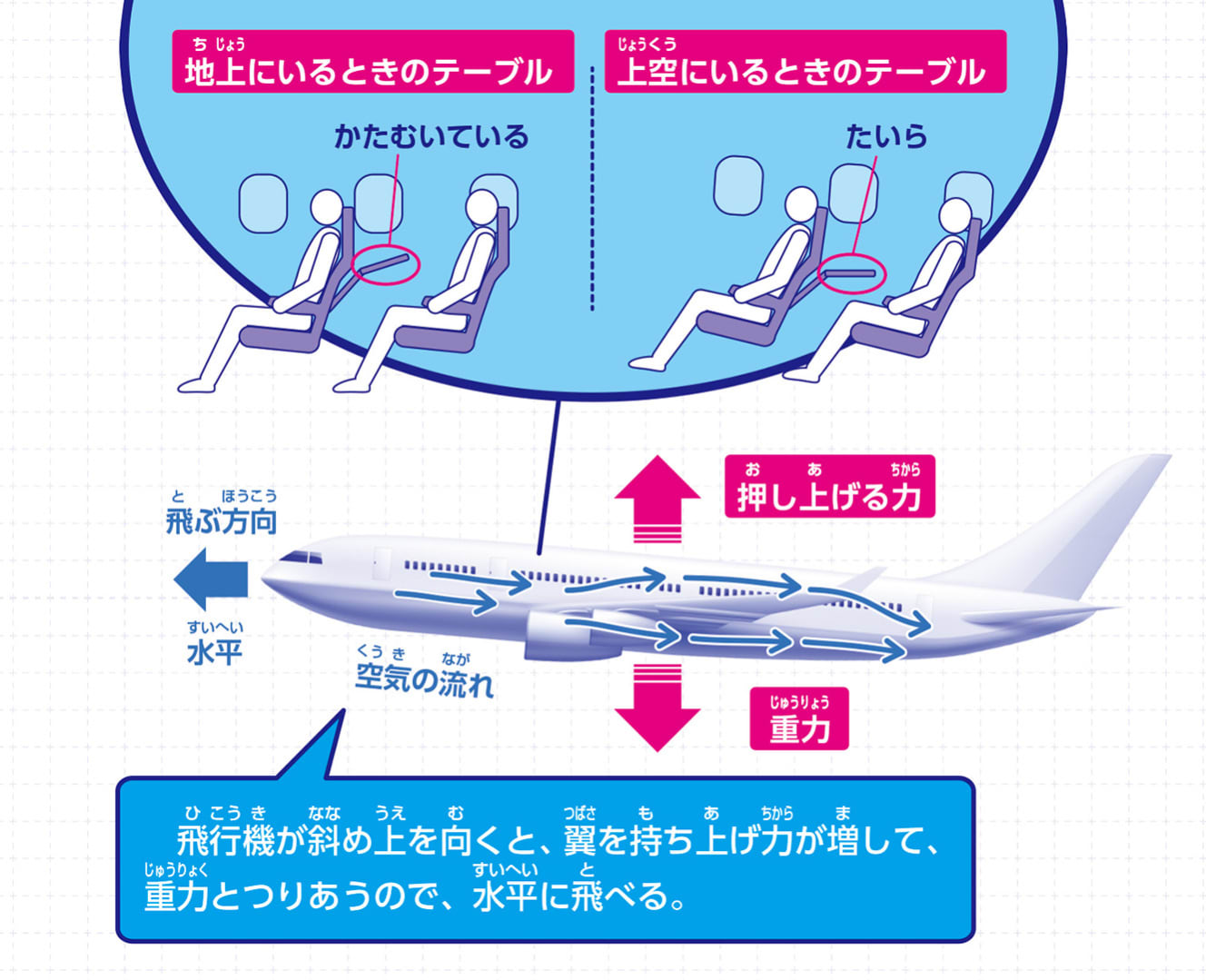
For this reason, the tables attached to the seats are elevated in front of the aircraft so that they are horizontal when the aircraft is at an angle, making it easier to drink or read a book in the cabin.
What are the dents in plastic bottles for?
On domestic flights, passengers can carry beverages in PET bottles on board. These PET bottles all have dents at the bottom, and some have round or square bodies, and some have nipples.
These dents and nicks, as well as the round or square body, are for air pressure.

PET bottles with round bodies and large dents at the bottom are mainly used for carbonated beverages. The bottom of these bottles is indented in advance so that when the carbon dioxide gas inside expands the bottle, the bottom portion expands and prevents the bottle from falling over.

When the fuselage is round, the pressure of carbon dioxide gas is evenly applied to the walls. The reason is the same as the round fuselage of an airplane.

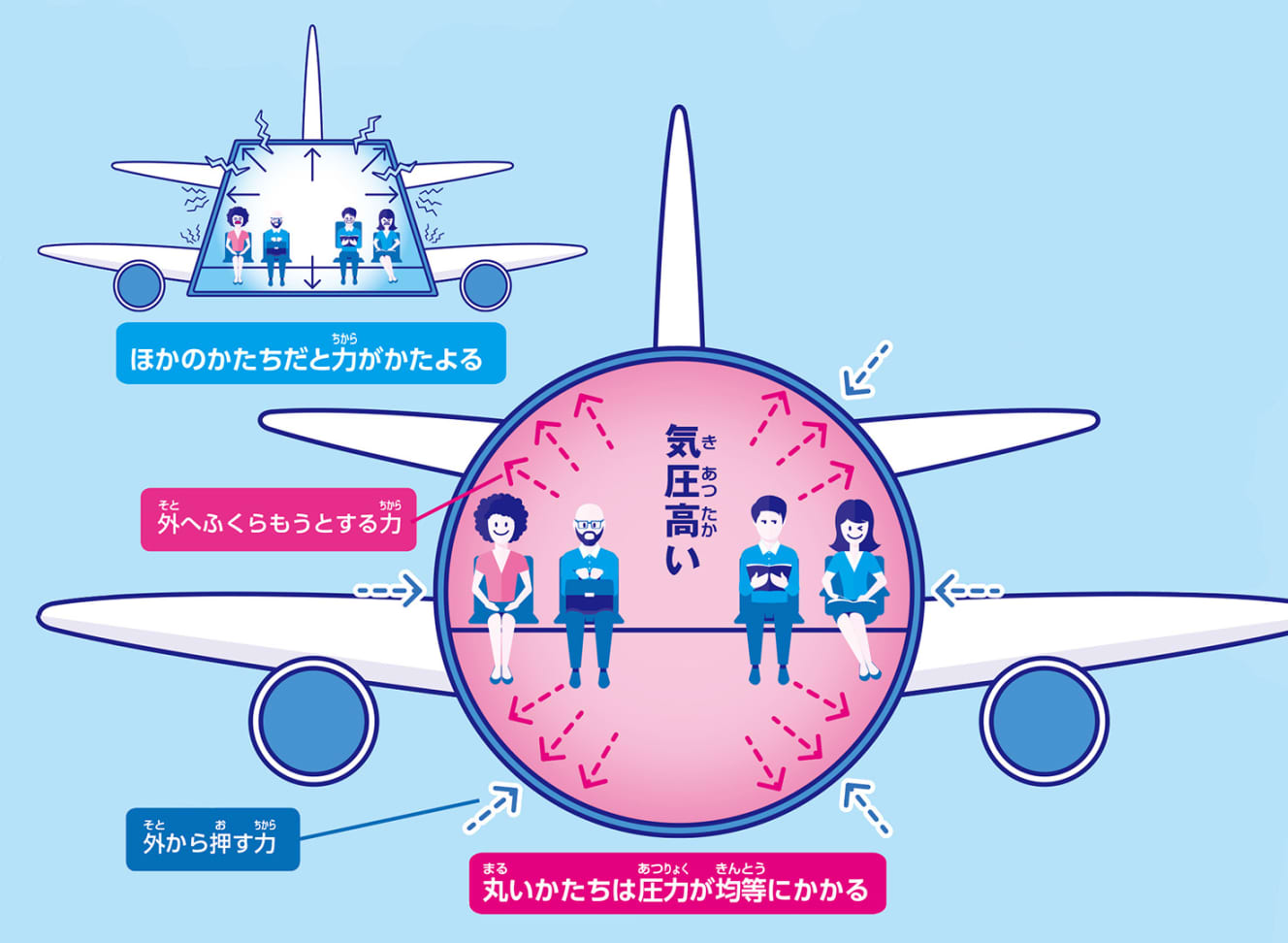
Plastic bottles containing tea, for example, are filled with sterilized heat-treated tea, which causes the air pressure inside to drop when the bottle cools down. For this reason, many bottles have a square shape with a neck or pattern to prevent the body from being deformed by the air pressure from the outside.
Since the air pressure is slightly lower in the cabin than on the ground when flying up in the sky, PET bottles are also affected. It is advisable to open and drink beverages in PET bottles brought on board as soon as possible.
The Shape of Things: An Illustrated Guide to the Secrets of Forms that Even Adults Don’t Know.
Written by Toshiro Kameya, supervised by Kata no Kagaku Kai, published by Kodansha Ltd.
Written and composed by: My Book Factory
